Most businesses do not know where to start when it comes to the web development process. Whether you are a small business or a large brand with thousands of products, knowing the website creation checklist helps you stay ahead and use your resources and time efficiently. That’s why we are here to walk you through the entire procedure.
Why listen to us? IT Verticals has a team of in-house, seasoned web developers. Each brings a unique set of skills to the table, and together, we have worked on countless custom web development projects worldwide. In this article, we will break down the website development process and explain how to make a website step by step.
Web development is about building websites and apps, not just designing how they look and work. While web design services focus on appearance and functionality, web development specifically deals with building and programming them.
Web developers build websites, making sure they function properly and offer a great user experience. This web development process includes coding, using a variety of programming languages. However, the coding language a web developer uses varies depending on the web development platforms used. That said, some of the most commonly used web development languages are HTML, CSS, and JavaScript.
The three main types of web development are as follows

The front-end development process focuses on what users see and interact with. Front-end developers, also called web designers, make your website look and feel good. They turn your web design ideas into code, acting as a bridge between design and technology.
Front-end developers need to know HTML, CSS, JavaScript, and frameworks like React and WordPress. They create websites that work on any device, test for bugs, and follow SEO guidelines.

Back-end web development creates the backbone of your website and keeps it running smoothly.
A back-end developer handles things like databases, user logins, and server settings. They work behind the scenes to make sure everything works correctly.
The main objective of the back-end web development process is to make sure that your website functions well and loads quickly. This is done by building servers using modern frameworks, managing databases, and handling data on the web server. Back-end developers use programming languages like PHP, Ruby, and Python, as well as tools like MySQL, Oracle, and Git.



Full-stack development means building both the front-end and back-end of a website. The front-end is what users see and interact with, while the back-end handles the behind-the-scenes work, such as data processing and communication.
A Full-Stack Developer knows both front-end and back-end development. They are skilled in various programming languages and can take on leadership roles in projects. They are versatile and understand every aspect of we development process.

What are the Requirements for the Website Development Process?
Before you start developing a website, some basic requirements to consider are as follows
Know Your Requirements
Understand what you want your website to achieve, including specific features and functionalities.
Target Audience Analysis
Identify your target demographics and preferences of your target audience to tailor the website accordingly.
Website’s Features and Functionalities
Determine the necessary features and functions your website should have to meet its goals.
Content Planning
Plan the type of content to include on your website, such as text, images, and multimedia.
Design Specifications
Define the visual appearance and layout of your website, including colors, fonts, and overall style.
Technical Constraints
Assess any technological limitations or requirements that may impact your website development process.
Timeline and Budget
Establish realistic timelines and budget constraints for completing the website development phases within specified parameters.
A Tip:
It is important to have precise requirements to prevent delays and guarantee satisfactory outcomes. Gather a detailed checklist of requirements for a seamless website development process. If you are unsure about your needs, consider hiring a web developer or web development company. This will allow you to discuss your website idea and goals and handle the development process for you.
7 Steps of Website Development Process
From planning to launch, here are the seven web development steps that you must know.
The first step in building a website is setting clear goals for your project. This involves:
Business Details: Understand your business offering, its purpose, unique value, and stakeholders.
Knowing Your Business Goals: Set measurable objectives for your website and determine key performance indicators (KPIs) to track its success.
Identifying Target Audience: Define who your website is for and research their preferences, habits, and expectations.
Analyzing Your Competition: Study competitors to identify their strengths and weaknesses and develop strategies to stand out in the market.



Next comes the planning stage. You will map out your website’s design, including landing pages, product pages, and important areas for user actions. During this part of building your website, you’ll map out how users move through it and where they convert. This will help you plan the path users take on each page.
A sitemap
A sitemap is like a map of your website. It shows all the pages, where they are, and how they connect.

This includes what users see and what search engines like Google see. A sitemap helps organize your website content so your strategists and designers can plan each page better.
A wireframe
A wireframe is a blueprint for each page of your website. It shows where everything goes, like headlines, buttons, and subscription boxes. It should include designs for both desktop and mobile versions of the page.
At this point of the web development procedure, it is time to design your website’s user interface (UI). Here, you will introduce your branding and complete your website’s look and feel. Define each branding element, from your color palette, logo, and iconography to the images and videos you will use.
These branding elements should stay the same across all platforms, like your website, social media, and marketing materials. Keeping your branding consistent helps people recognize your brand and builds trust.


Now, it is time to plan and create your website’s content. This may include:
- Landing pages
- Product or service descriptions
- Testimonials
- Case studies
- Blog posts
- Videos
- Images

- Newsletters
- White papers
- Social media posts
Tailor your content to your target audience. Research where your target audience hangs out online and what kind of content they like. Use keywords strategically to answer your customers’ search queries and influence their purchasing decisions.

Once you have set your goals, planned your design, created branding elements, and mapped out your content, it is time for web development. You need both backend and frontend developers to build your website, following industry standards and detailed plans.
Your website should be designed to grow with your business. Therefore, our web developers use research to ensure your site fits your industry, offerings, target audience, and more.



Before launching your website, it is crucial to test it thoroughly. Your web developers should ensure all elements function correctly, checking for issues like broken links and compatibility with various devices. The QA team helps confirm that the code meets standards, while speed tests verify responsiveness across devices. After manual and automated testing, your website is ready to go live.

Hooray, your website is live and running! However, the web development phases continue. As your business expands, you might need to add pages, improve features, and update functionalities. Regular maintenance involves:
- Editing existing content
- Adding content
- Fixing bugs and issues
- Dosing site backups
- Installing plugins


Web design trends evolve regularly, and new tech opens doors for better features. Hiring a pro web design agency ensures your brand stays competitive. Our skilled web developers will keep your site updated, perform regular maintenance, and optimize your SEO.
Whether you are creating a website by yourself or considering hiring a web development agency, the following top 10 web development tools offer an ideal solution. These web development tools cover everything from code editors and browser tools to API testing. Let us explore them in further detail.
1. Bootstrap
Bootstrap is a well-known open-source CSS framework designed to help with front-end web development by offering a wide range of pre-styled components and utilities. As a web developer, you can easily create responsive, mobile-first websites and web applications using this framework.
Bootstrap provides various features and tools to improve your web development process. For instance,
it includes a responsive grid system that allows you to create flexible and adaptive layouts for your web pages. The grid system is based on a 12-column layout, simplifying the creation of layouts that adjust to different screen sizes and devices.
Moreover, Bootstrap offers a set of CSS utility classes, making it effortless to apply common styles and adjustments. If you need assistance, Bootstrap has a large and active community of developers where you can find resources and third-party plugins to support you in your projects.
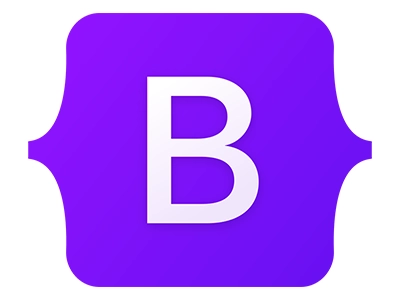

Chrome Developer Tools (DevTools) are a collection of web development and debugging tools built into the Google Chrome browser. This allows developers to debug JavaScript, change CSS styles, analyze website speed, and improve web pages directly in the browser.
You also gain access to network tools to monitor HTTP requests, analyze network activity, and speed up

resource loading. You can also identify slow-loading resources, reduce delays, and enhance overall website performance.
Chrome Developer Tools are free for all Google Chrome users, making them accessible even to new developers with tight budgets. This tool is a valuable resource for web development process, providing essential tools for creating and optimizing websites efficiently.

3. GitHub
GitHub is a platform for storing, managing, and collaborating on the website development process via a distributed version control system. It acts as a central hub for storing code, tracking changes, and coordinating teamwork.
With GitHub, you work together with other developers through features like pull requests, code reviews, and team discussions.
This allows every member of your team to give feedback in an organized and transparent way. GitHub offers a free plan with unlimited repositories and collaborators.
If you need more advanced features, you have the option to purchase paid plans. These include features like advanced auditing and GitHub Codespaces, providing additional capabilities for your projects.


4. jQuery
jQuery is available for you to download and use at no cost. It is a lightweight, open-source JavaScript library created to make HTML document traversal and manipulation, event handling, and animation easier.
With jQuery, you find a concise and expressive syntax for common JavaScript tasks.
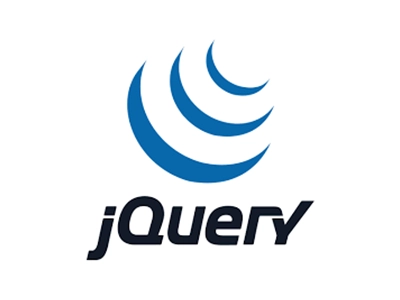
This means you can write less code and still achieve the same results. jQuery’s API functions smoothly across different web browsers.
This feature enables you to write code that behaves consistently across various browsers without needing to test and debug for each one extensively. This allows you to save time and effort while ensuring your code works reliably across different platforms.

5. Marvel
Marvel is renowned as one of the top wireframing and prototyping tools available. It provides an intuitive platform for creating top-notch mockups and prototypes for web and mobile apps. Thanks to its user-friendly interface, features, and collaborative capabilities, Marvel makes it easy for designers and developers to work together efficiently.
Marvel also includes user testing features, allowing designers to gather feedback early in the design phase.
This helps pinpoint potential issues and enhance the final product’s usability. The best part? Even the free plan includes some of Marvel’s powerful features.
If you need more, you can opt for one of the paid plans to create additional projects, access more features, and receive premium support. With Marvel, you have everything you need to streamline your design process and create outstanding digital experiences.
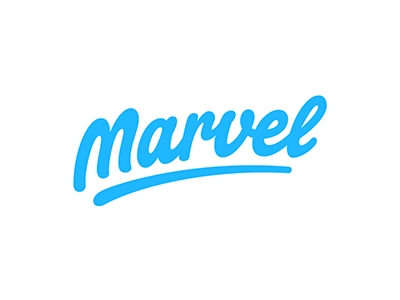

Node Package Manager (npm) is a JavaScript package manager designed for use within the Node.js runtime environment, and it is available for you to use. It offers a wide range of open-source libraries and tools that can help simplify your website development process.
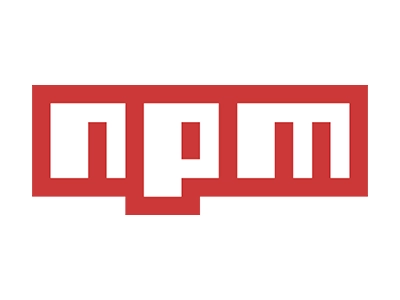
With npm, you can easily add dependencies to your projects using a simple command, saving you from the hassle of managing and integrating third-party code manually. There is a free tier that gives you unlimited access to public packages.
Additionally, if you need more features and support, you can opt for paid plans starting at just $7 per month. These plans offer enhanced functionality and additional support options to suit your needs.

7. Postman
Postman is a widely used API web development and testing tool that can make building, testing, and documenting APIs easier. It offers a user-friendly interface for sending HTTP requests, examining responses, and automating tasks.
It’s crucial for API development and collaboration. With Postman, you can thoroughly inspect API responses, including headers, status codes, and response body content.
You can also view responses in various formats like JSON, XML, and HTML, simplifying the process of debugging and resolving API issues.
Postman provides various pricing plans to suit different web developer needs. While the free version offers basic functionality, paid plans include additional features such as custom domains, single sign-on (SAML), and advanced analytics tools. Choose the plan that best fits your requirements to maximize your API development experience.


8. Sublime Text
Sublime Text is a highly praised text editor known for being simple, fast, and adaptable.

It is an ideal tool for beginners and experts for its strong features and easy-to-use interface. Despite being lightweight, Sublime Text has advanced features like simultaneous editing, letting users modify multiple lines of code at once. This boosts productivity without slowing down.
Sublime Text works smoothly on Windows, macOS, and Linux and fits seamlessly into any workflow. While it is free to download, buying a license adds extra features. Prices are fair: $99 for personal use and $65 per year for business.

You have Visual Studio (VS) Code, an open-source code editor tailored to offer you a seamless coding experience. It comes with an array of features such as syntax highlighting, auto-complete, and Git integration, all aimed at boosting your productivity and speeding up your coding process.
VS Code supports a wide range of web development languages, making it suitable for various development tasks.
Whether you are working on frontend development with HTML, CSS, and JavaScript or backend development with Python, Java, and C#, it has you covered.
Best of all, Visual Studio Code is completely free to use. Additionally, you can download the Insiders version to access the latest releases and features. It’s a versatile tool designed to streamline your coding tasks and enhance your development workflow.
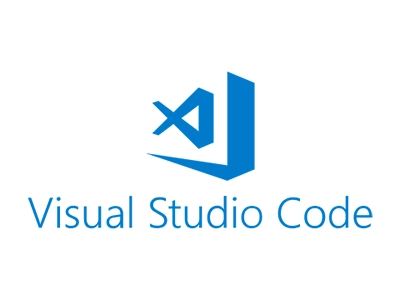

10. Webpack
Webpack is a module bundler designed to help you process JavaScript, CSS, and other assets and create optimized
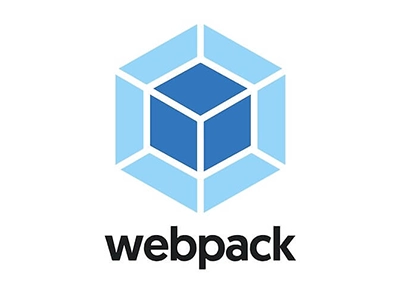
bundles for your web applications. With Webpack, you can organize your codebase into modules, handle dependencies, and bundle assets effectively.
You will also be able to process different file types, such as CSS, images, and JSON. Applying transformations such as compilation and optimization is straightforward. By bundling and optimizing assets, Webpack boosts the performance of your web applications, leading to quicker page loads and enhanced user experiences.

- Have you registered a secure domain name?
- Is your domain name optimal? It should be short, easy to recall, similar to your brand name, and have extensions like .com, .net, .org, or a country-specific one.
- Do you have a dependable web hosting provider?
- Have you installed an SSL certificate for your site? It is crucial for data security, protecting against online theft and cybercrime. It also confirms website ownership.
- Since most internet users recognize the importance of SSL certificates, having one assures them that your brand prioritizes safeguarding their data.


To make sure that your website is functioning properly, ask yourself the following questions.

- Are all forms functioning properly to gather user data?
- Is the collected data securely stored in an easily accessible database?
- Do auto-responders operate correctly?
- Are external links and 404 redirects set up correctly?
- Do social media icons and RSS feeds function properly?
- Does clicking the brand logo lead to the home page?
- Do all third-party tools run smoothly?
- Is the website compatible across different web browsers?

- Is the website accessible to all users, regardless of any disabilities or impairments they may have?
- Does it enable individuals with disabilities to navigate smoothly?
- Is the website compatible with screen readers?
- Does it meet legal requirements such as the Americans with Disabilities Act (ADA), Section 508 of the Rehabilitation Act in the US, and the Web Content Accessibility Guidelines (WCAG)?
- Accessibility testing is essential to ensure inclusivity and meet the needs of people with disabilities.


- Does your website comply with both local and global regulations, tailored to the intended audience? It is crucial for your web development checklist because non-compliance could lead to penalties.
- Have you included necessary site disclosures? These should ideally cover:

- Disclosure of receiving commissions through affiliate links for recommended products and services.
- Disclosure of receiving compensation for any site content, including photos, text, or videos.
- Disclosure of recommending users consult professionals for medical or legal advice provided on the site.
- Is the website compliant with relevant data protection laws, such as GDPR, SOC2, HIPAA, CCPA, etc.?
- Are your users adequately informed about how and why their information is collected and used?

- Are all texts properly formatted, grammatically correct, and utilizing relevant keywords?
- Are all company contact details accurate?
- Have placeholder images been replaced with final images?
- Have all images been optimized for fast loading times?
- Are all videos uploaded with the correct scripts?
- Do images, texts, and videos load seamlessly on most customer devices and browsers?
- Is downloadable content (eBooks, studies, whitepapers) available
- Is downloadable content downloading smoothly for users on different endpoints?
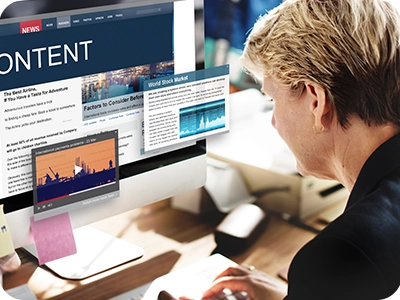

- Does your website comply with both local and global regulations, tailored to the intended audience? It is crucial for your web development checklist because non-compliance could lead to penalties.
- Have you included necessary site disclosures? These should ideally cover:
- Disclosure of receiving commissions through affiliate links for recommended products and services.

- Do all pages on the website have correct H1 headings, SEO titles, and unique meta descriptions?
- Is all metadata for website content included in the RSS feed?
- Has a dynamic XML sitemap been generated?
- Have you submitted the XML sitemap to search engines?
- Have URL names been adjusted to align with the site’s content structure?
- If there are old URLs, have 301 redirects been set up?
- Are rel=”nofollow” tags needed? If yes, have they been added where necessary?

- Have you inserted tracking codes? These are JavaScript snippets added to a website’s HTML code to track traffic sources and user interactions. Utilize tools like Google Analytics to assess the effectiveness of these codes.
- Develop initial strategies, at the least, for conversion tracking, conversion rate optimization, campaign monitoring, marketing data analysis, and related tasks.
- Integrate suitable plugins with your site. These plugins offer specific features for monitoring website activity and deriving actionable insights for enhancing user experiences and conversion rates.



- Does the website and all its components load swiftly, accurately, and fully on various devices, browsers, browser versions, and operating systems?
- Does the website function as anticipated on the device-browser-OS combinations used by your primary target audience?
- We recommend testing the site on real browsers and devices to detect any bugs, errors, or anomalies before users encounter them. Cross-browser testing should be a vital part of your website development strategy.

- Does the website load within three seconds or, ideally, two for ecommerce sites? Any longer, and you could lose around 40% of potential customers due to abandonment.
- Website speed is crucial for a website’s success.
- Testing must include checking the website’s loading speed across various browsers and devices.
- Is the site loading optimally across multiple browsers, browser versions, devices, and operating systems? Keep in mind the diversity of device-browser-OS combinations your users may have.



- Perform Geolocation testing to confirm that your website provides content tailored to a user’s location.
- Failure in testing may lead to mis-targeting and result in negative website experiences.
- Geolocation testing is crucial for business success, so ensure that various test scenarios are covered from all target locations.
- Additionally, conduct Geoblocking to limit content access based on user location, which may be necessary to comply with different laws or distribution rights across countries.

- Does the website have a responsive design that adapts to various device screen sizes and resolutions? Make sure to conduct responsive design tests before launching the site.
- Is the website optimized with a mobile-first design, ensuring it is mobile-friendly and performs well on mobile devices?


IT Verticals offers web development services that is a part of our custom software development services. We specialize in website development process and provide expert guidance and support.
For example, you can hire a WordPress developer. We start by understanding your unique requirements and goals, ensuring we create a website that meets your specific needs. Our team collaborates closely with you to design a visually appealing and user-friendly website that reflects your brand identity.
During different website development phases, our developers use cutting-edge technologies and industry best practices to build a high-quality website. Whether you need front-end web development to enhance user experience or back-end web development for robust functionality, we have you covered. We prioritize responsiveness and ensure your website performs seamlessly across various devices and browsers.
Furthermore, we conduct thorough testing to identify and resolve any issues before launch, guaranteeing a smooth user experience. Additionally, we assist with domain registration, web hosting, and SSL certificate setup to ensure your website is secure and reliable.
Once your website is live, we continue to support you with regular maintenance and updates, ensuring it remains up-to-date and optimized for performance. With our eCommerce developers by your side, you can trust us to guide you through every step of the website development process and deliver a website that exceeds your expectations.
